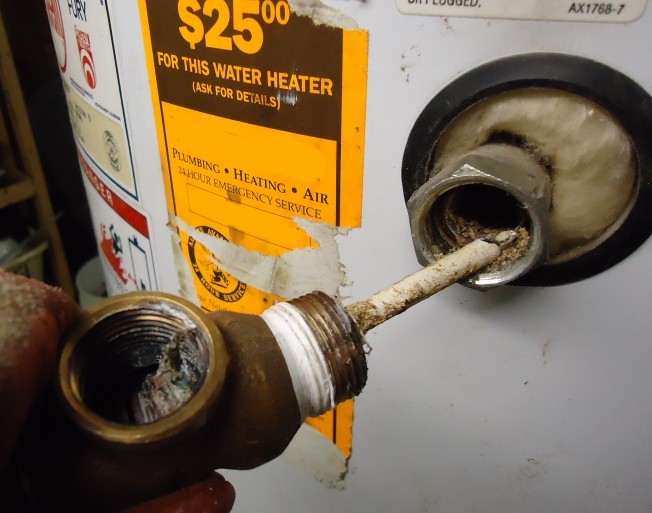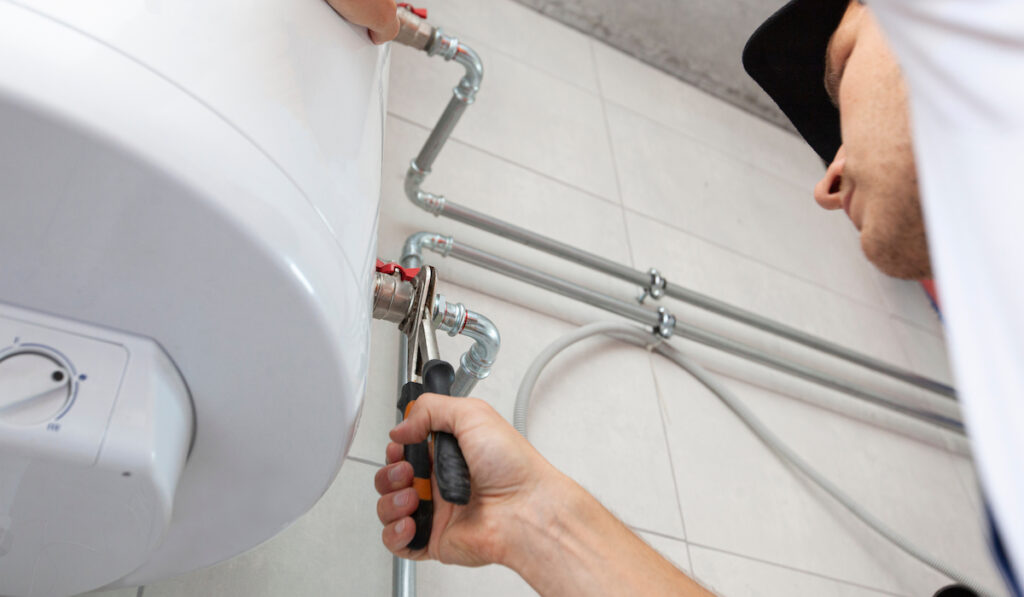Tips on How to Maintain Your Home's Hot Water System Functioning WellTips on How to Keep Your Home's Hot Water System in Good Condition
Tips on How to Maintain Your Home's Hot Water System Functioning WellTips on How to Keep Your Home's Hot Water System in Good Condition
Blog Article
The author is making a few great points on Water Heater Maintenance Tips You Can't Afford to Forget as a whole in this article which follows.

Hot water is vital for everyday comfort, whether it's for a revitalizing shower or cleaning meals. To ensure your hot water system runs effectively and lasts much longer, normal upkeep is key. This article supplies useful suggestions and insights on just how to preserve your home's warm water system to stay clear of interruptions and expensive repairs.
Intro
Keeping your home's hot water system might appear complicated, yet with a few straightforward actions, you can guarantee it runs smoothly for several years ahead. This guide covers every little thing from understanding your warm water system to DIY upkeep tips and recognizing when to hire specialist assistance.
Relevance of Maintaining Your Warm Water System
Normal maintenance not only expands the lifespan of your warm water system but additionally ensures it runs efficiently. Ignoring upkeep can lead to reduced performance, higher power bills, and also premature failing of the system.
Signs Your Hot Water System Demands Maintenance
Understanding when your warm water system needs attention can avoid major problems. Keep an eye out for indicators such as irregular water temperature, strange noises from the heating unit, or corroded water.
Purging the Hot Water Heater
Purging your hot water heater eliminates debris build-up, boosting performance and lengthening its life.
Monitoring and Changing Anode Rods
Anode poles prevent corrosion inside the tank. Inspecting and changing them when broken is crucial.
Complex Problems Needing Expert Assistance
Examples consist of significant leakages, electric issues, or if your water heater is continually underperforming.
Routine Specialist Upkeep Benefits
Specialist maintenance can consist of thorough evaluations, tune-ups, and making sure compliance with safety criteria.
Checking and Readjusting Temperature Settings
Changing the temperature setups guarantees optimum performance and safety.
Do It Yourself Tips for Maintenance
You can perform numerous upkeep tasks on your own to keep your warm water system in leading problem.
Checking for Leakages
On a regular basis examine pipes and links for leaks, as these can lead to water damages and greater expenses.
Understanding Your Warm Water System
Before diving into maintenance jobs, it's valuable to understand the basic parts of your hot water system. Generally, this consists of the water heater itself, pipes, anode poles, and temperature level controls.
Month-to-month Upkeep Tasks
Routine regular monthly checks can help catch small concerns before they rise.
Examining Pressure Relief Valves
Examining the stress safety valve guarantees it operates properly and prevents excessive stress build-up.
Protecting Pipes
Insulating warm water pipes decreases heat loss and can save power.
When to Call a Professional
While DIY maintenance is beneficial, some issues call for professional proficiency.
Conclusion
Regular upkeep of your home's warm water system is necessary for effectiveness, durability, and cost savings. By adhering to these pointers and understanding when to seek expert help, you can ensure a reliable supply of warm water without unforeseen disturbances.
Water Heater Maintenance: The Basics
Maintaining your water heater will ensure it operates efficiently and has a longer lifespan. Neglecting regular maintenance can lead to costly repairs and an even bigger chunk of your savings if you have to replace it sooner than necessary. But there’s good news: Most water heater maintenance tasks are relatively simple and easy for homeowners with basic DIY skills.
Flush the Water Heater
Over time, sediment and minerals can build up in the tank, reducing its efficiency and potentially causing damage. To flush the tank, turn off the power or gas supply, attach a hose to the drain valve near the bottom and open the valve to drain the water until it runs clear. Ideally, flush the tank annually.
Replace the Anode Rod
The anode rod is a sacrificial metal rod that helps prevent corrosion inside the tank. Inspect and replace it every three to five years or per the manufacturer's recommendation. To replace the anode rod, turn off the power or gas supply, drain a few gallons of water from the tank, unscrew the old rod and replace it with a new one. If the anode rod is significantly corroded or covered in calcium buildup, it's a sign the water heater may need to be replaced soon.
Tune-Up
A yearly tune-up can help identify potential issues and ensure your water heater operates at peak efficiency. This typically involves checking the thermostat, burner assembly (for gas heaters) and any other components specified by the manufacturer. During a tune-up, the technician may also clean the burner and adjust the pilot light (for gas heaters) or examine the heating elements (for electric heaters).
How to Maintain Your Water Heater
Insulate the tank. Insulating the tank can improve energy efficiency and reduce heat loss, saving you money on energy bills. You can purchase precut insulation blankets designed specifically for water heaters or use standard fiberglass insulation wrapped securely around the tank. Check the temperature. The recommended water temperature for most households is around 120 degrees Fahrenheit (49 degrees Celsius). Higher temperatures can increase energy costs and potentially cause scalding. Use a kitchen thermometer to check the temperature at the faucet nearest the water heater. Monitor water pressure. Excessive water pressure can strain the water heater and cause leaks or even tank failure. Install a pressure-reducing valve if necessary. The ideal water pressure range is between 60 and 70 PSI (pounds per square inch). Test the temperature and pressure (T&P) relief valve. The T&P relief valve is a safety feature that releases pressure if the tank gets too hot or the pressure builds up too high. Test it annually by lifting the lever and allowing a small amount of water to release. Replace the valve if it doesn't release water or reseal properly. Check for leaks. Regularly inspect the tank, pipes and fittings for leaks or corrosion. Deal with issues promptly to prevent further damage. Even a small leak can lead to significant water damage over time. Consider a tankless water heater. If your traditional tank-style water heater is nearing the end of its lifespan ( typically 10 years), consider replacing it with a tankless water heater. These units heat water on demand, reducing standby energy losses and potentially saving you money on your energy bills. Schedule professional maintenance. While homeowners can perform many water heater maintenance tasks, it's still a good idea to schedule professional maintenance every few years. A plumber or HVAC technician can thoroughly inspect the unit, identify potential issues and ensure it operates safely and efficiently. https://www.homeserve.com/en-us/blog/home-improvement/hot-water-heater-maintanence/

We had been shown that article on Tips For Maintaining Your Hot Water Heater through a good friend on a different blog. Liked our content? Please quickly share it. Let somebody else find it. Thanks a bunch for your time. Kindly stop by our site back soon.
Schedule Your Service Report this page